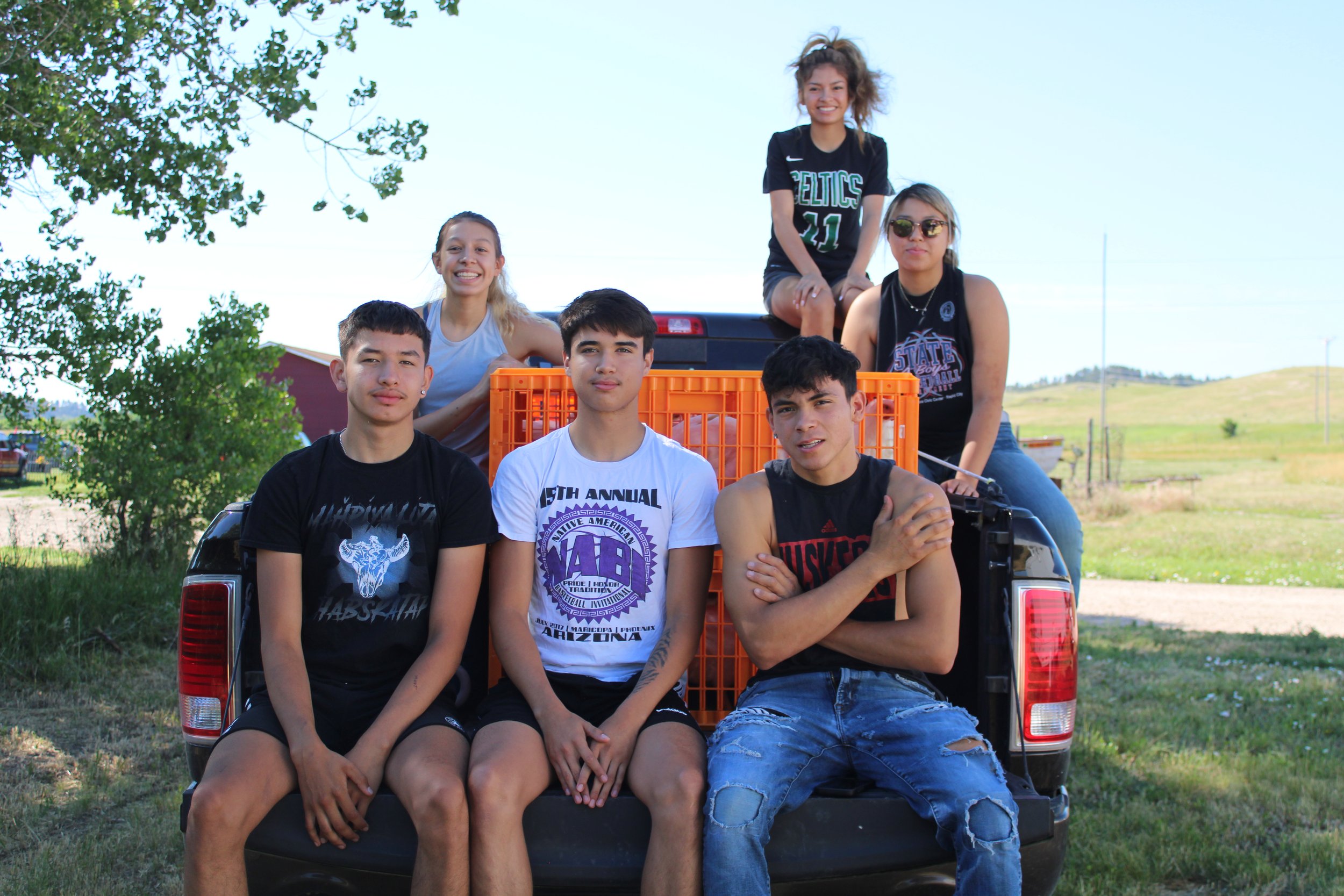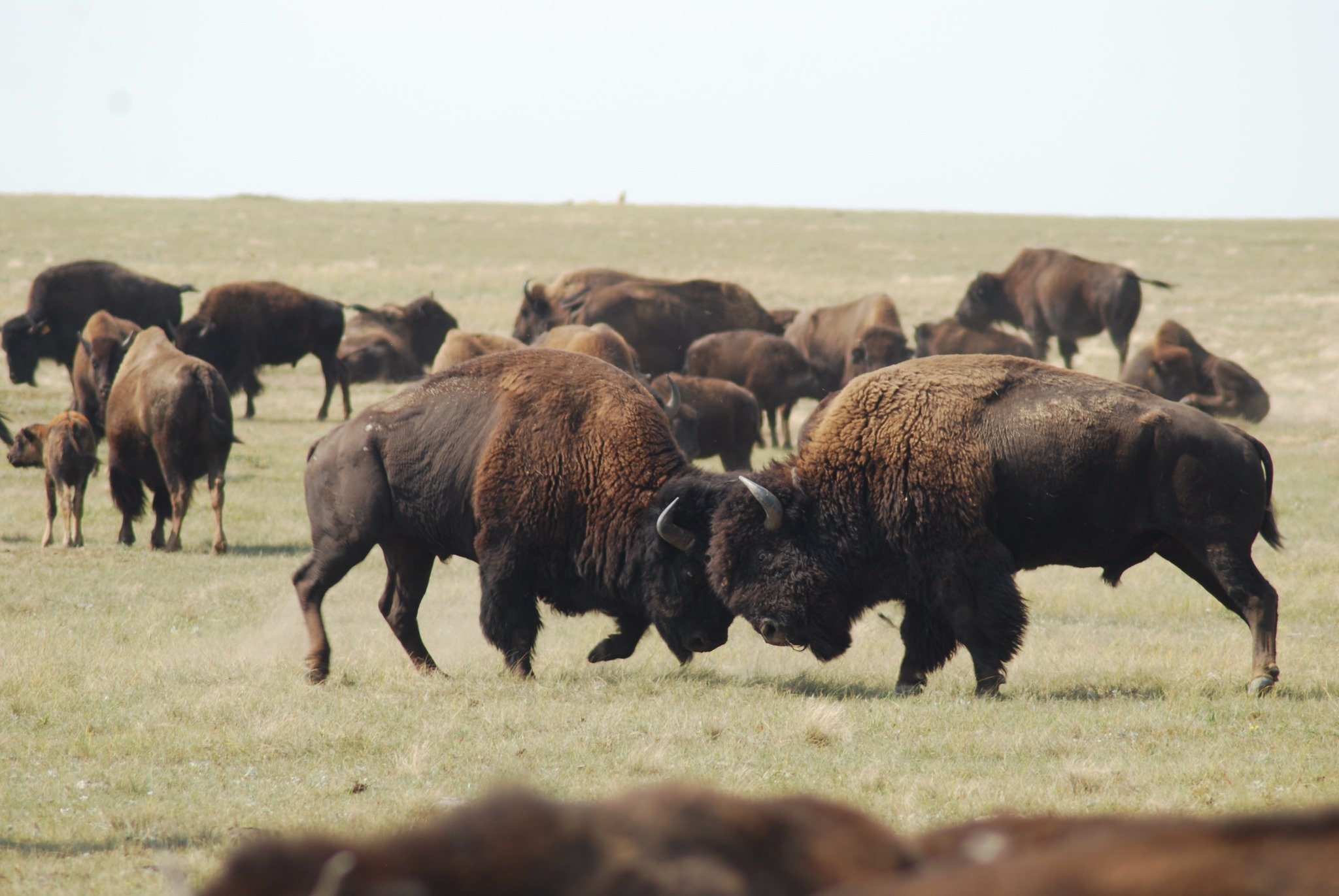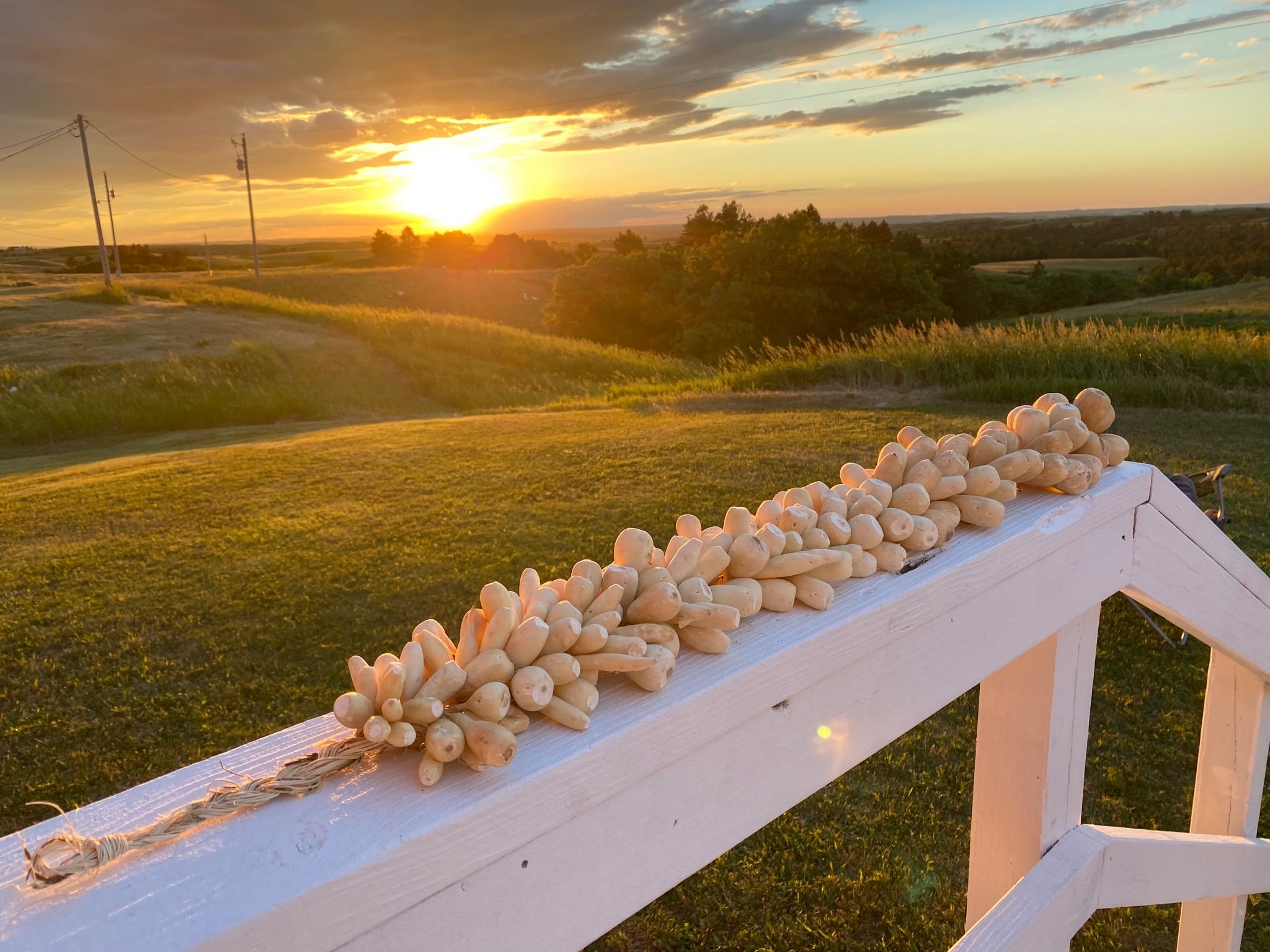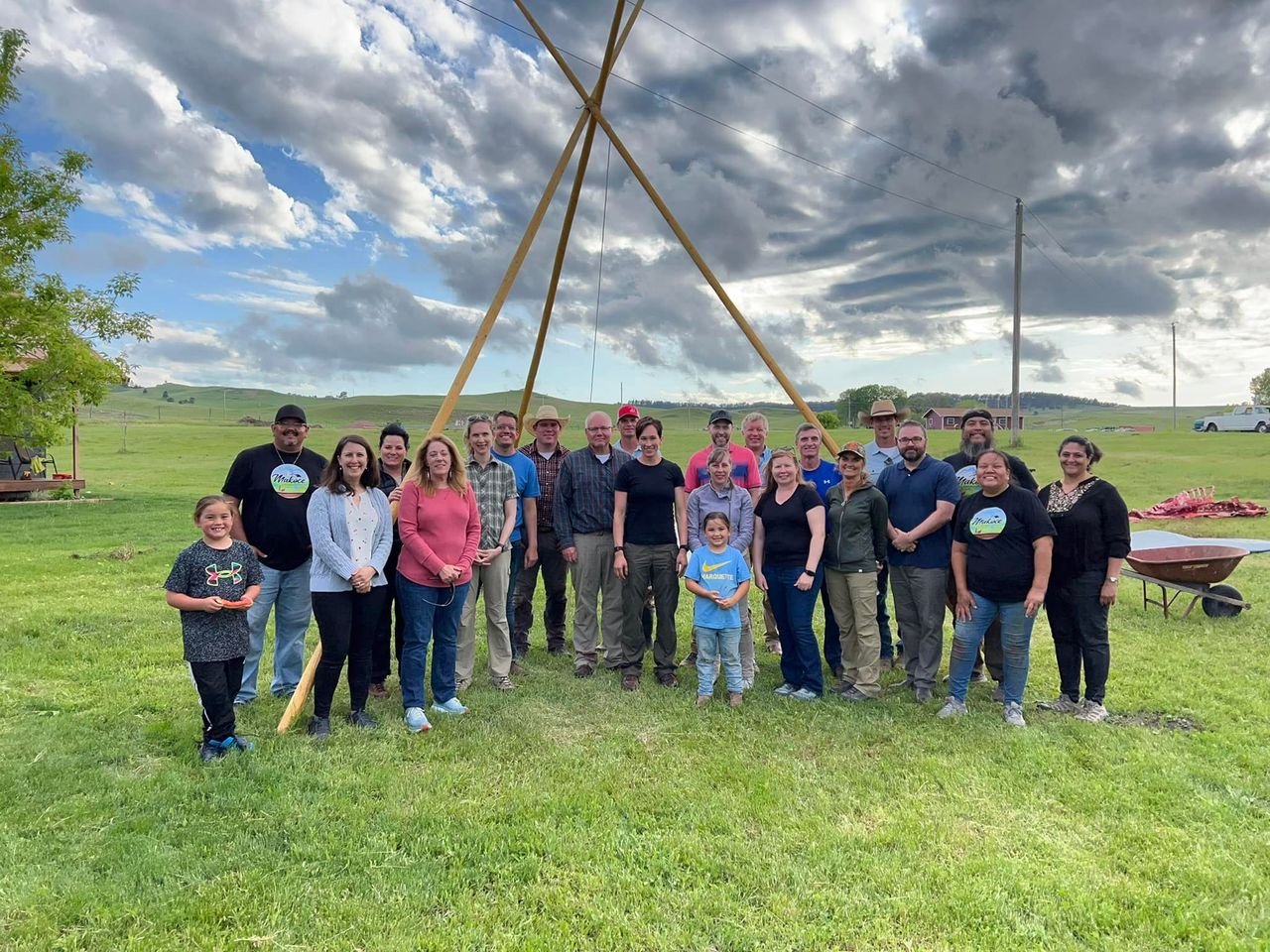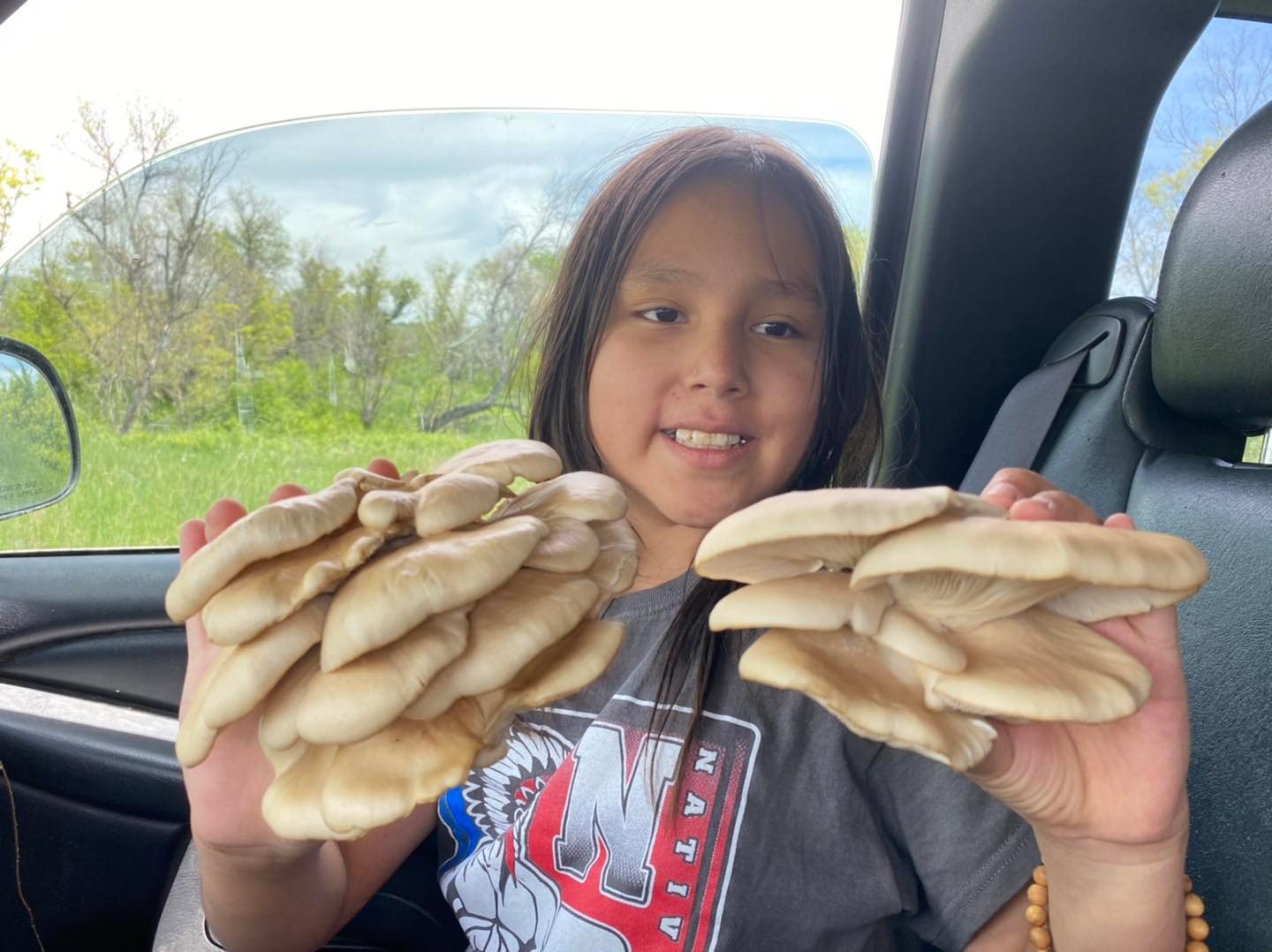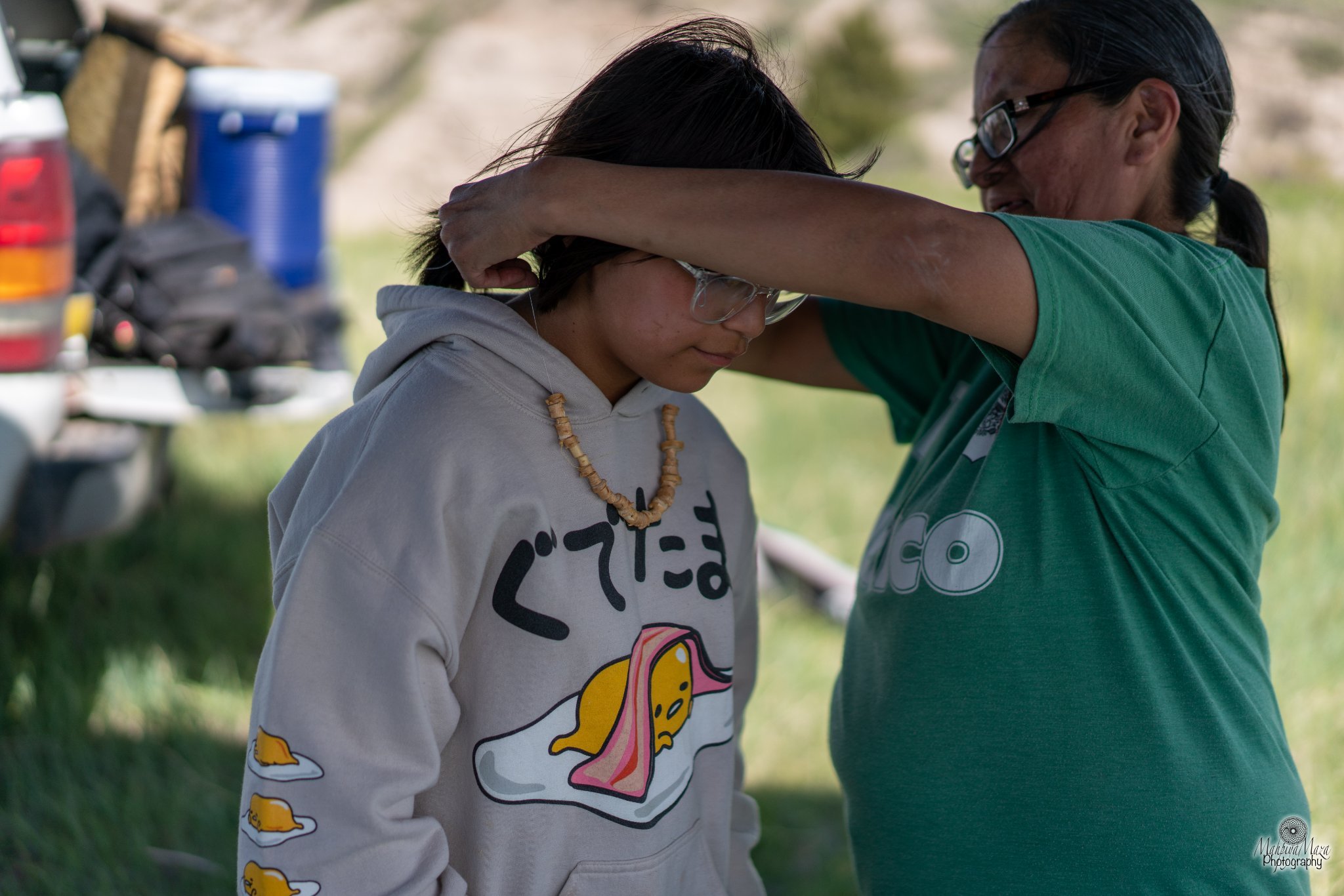How Colonial Land Use Policies Diminish Our Sovereignty–and How to Take Action
Controlling a nation’s use of land–and its ability to draw from it to support healthy, thriving communities–is an ancient tactic of colonialism. Before contact with European settlers, Indigenous nations across North America had access to a varied, abundant, and nourishing diet by hunting, growing, and foraging across hundreds of millions of acres. But as the United States grew and the thirst for land spread westward, policies and systems were put in place to control the way Indigenous nations lived with and on the land–first through containment on reservations, and then through allotment, which aimed to assimilate Native people by breaking down remaining tribal lands into individual lots. Our connection to the land–and to the nourishment it provided–was intentionally and systematically severed.
That story of American colonialism is one we all know all too well. But while some think of it as part of our history, the story is very far from over. Although the colonial policies that broke down Indigenous land use and food systems were enacted over a century ago, they are still very much in effect today. Here on the Pine Ridge Reservation, restrictions on land use that originated in the late 19th and early 20th century still actively threaten the health and wellbeing of our communities right now–in 2022. By preventing us from returning to a nourishing, Indigenous food system, these policies will continue to harm future generations. We must demand action to change them.
Returning to a regenerative food system rooted in Indigenous values–one that values both people and the land itself–is the heart of our mission at Makoce Agriculture Development. When it comes to the issue of food here on the Pine Ridge Reservation, we know the challenges are significant. Despite the large land base on which we live, the inability to use it effectively means that more than 95% of all our food is shipped onto the reservation. Most of it is highly processed, contributing to high rates of diabetes, heart disease, and other serious health conditions. Yet there is a growing movement–here on Pine Ridge and across Indigenous communities–to indigenize our food system and restore a traditional approach. Elders have held onto the knowledge of growing and using traditional plants–and young people are reaching out and asking to learn from them. I had that experience with my own grandmother, who I watched in her garden until she encouraged me to start one of my own. The energy and innovation needed to reimagine our food system is already overflowing in our communities. It is the colonial land use policies that are holding us back.
What follows below describes the crooked path our team at Makoce had to navigate simply for the right to use my family’s own land to begin a nonprofit initiative designed to help our communities thrive. Over the last two and a half years, we’ve fought through countless barriers–during a global pandemic–to obtain the business lease we needed to start creating the foundations of a local food system. Ultimately we succeeded in overcoming the egregious land restrictions that are still in use today, and we’re proud that we were able to secure one of the largest business leases on allotted land to date. But the process has left us more than frustrated–and more determined than ever to advocate for changing the systems that control our own land.
Colonial land use policies have accomplished exactly what they were designed to do: prevented Indigenous nations from exercising their sovereignty and supporting their people. Here on Pine Ridge, these oppressive regulations have prevented the development of needed infrastructure, like business districts, and created insurmountable barriers to housing, the creation of Native-owned farms and ranches, and other other resources that support healthy economies and communities. Urgent and systematic change is needed now–in order for our communities to thrive, for opportunity to grow, and for sovereignty to be sustained. The future wellbeing of our people, our communities, and the planet itself depends on it.
Navigating the Land Use Process
After founding Makoce, I started searching for the land we’d need to begin building the foundations of a local food system. Our vision includes five core initiatives–including a regenerative farm, an collaborative educational institute, a community hub for food-related work, hemp production, and an advocacy alliance–that all require the ability to work with and learn from the land. And though it has been whittled down over the last 150 years by broken treaties, today the Pine Ridge Reservation still includes 1.7 million acres–more than enough to sustain a local food system. I didn’t imagine that access to land would be one of the first barriers I’d face. But as I began exploring how to pursue a business lease on my family’s allotted land, where I spent much of my childhood, the challenges became immediately clear.
What I know now is that the problem isn’t the land itself: it’s the policies that control our people’s use of it. Laws that have been on the books for nearly a century still govern the ways we can access our own land. Under the Code of Federal Regulations, Title 25 (containing the codified Federal laws and regulations pertaining to “Indians”), tribal members can only use allotted land if they apply to do so, and only for a restrictive number of purposes, including farming, pasture livestock, and building a residence. We are essentially the only community of people in the world that has a federal code outlining how we can live on our own homeland.
My research into getting a business lease for Makoce started in earnest in the fall of 2019. The process that unfolded over the next two and a half years took untold hours, financial resources, and negotiation skills. It demanded the knowledge of an attorney, a policymaker, a public relations professional, an accountant, a historian, and well beyond. I couldn’t find any real information or instructions to help guide me, because this isn’t a process tribal members have been free to or encouraged to pursue. And each step–only some of which are detailed here–reminded me of the significant barriers we still have to overcome to achieve sovereignty.
Steps to a Business Lease on the Pine Ridge Reservation
Meeting the Requirements of the BIA and Tribal Land Realty Office: There are two entities that govern land use on the reservation--the Tribal land office and the BIA Realty office. Neither had ever helped someone through this process before, so no one with either agency knew how to guide me. I had to connect with both offices repeatedly over the course of over two and a half years to ensure I was able to meet their separate and sometimes conflicting requirements.
Navigating the Policies of Allotment: Nearly 60 percent of the land on the reservation is allotted. As a result, ownership of more than half of the land on Pine Ridge is severely fractionated between many owners–because after an original allottee dies, ownership is divided between heirs, and divided again for each subsequent generation. This has created a “management nightmare where, in order for a landowner to utilize their lands, they may have to get the signature of dozens, hundreds, or even thousands of separate landowners.” Since the land was my family’s allotment, I spent more than a month connecting with relatives to obtain their signatures.
Archeological Assessment: Federal law requires archeological assessments be completed on tribal and public lands before their use. Although an assessment had already been done on my family’s land (so that it could be used as a residence), I was required to complete another through the BIA office, which took months to schedule and process.
Environmental Assessment: Following the archeological assessment, I was told I had to complete an environmental assessment. The quotes I received ranged from $14,000 to over $20,000, and as a small, start-up nonprofit, I didn’t have those funds on hand.
Fundraising: To complete the environmental assessment, I had to take a step back and apply for a grant through the Indian Land Tenure Foundation, which focuses on supporting Native nations in the recovery and control of their rightful homelands..I wrote and submitted a successful grant application and received enough funding to complete the environmental assessment and move forward.
Obtaining Tribal Support: Once the environmental assessment was cleared, the BIA shared that I would need official support from the tribal government to move forward. I presented my intentions before the Tribal Council’s Land Committee members, and was told I would need to present an official resolution. It was suggested the Tribe’s lawyer could offer support, but I ultimately had to prepare the resolution on my own--drawing on examples I could identify that related to my proposal. Months later, the Land Committee approved my resolution, and I was also able to get a letter of support from the tribal president’s office.
BIA Approval: Even after the Land Committee signed off on our proposal, in early November of 2021, the process continued to stretch on. Revisions were needed to our environmental assessment, a cultural survey had to be approved, and then everything was made publicly available for community comment.
Navigating the Interior Board of Indian Appeals: The community comment period opened the door to having to go before the Interior Board of Indian Appeals (IBIA), a federal review body at the Department of the Interior–separate and independent from the BIA–that issues final decisions in appeals “involving Indian matters.” When one local nonprofit raised a concern about Makoce obtaining a business lease during the community comment period, representatives from the BIA informed us that any legal challenge would have to be reviewed by the IBIA, even though the organization challenging us had no share in the allotted land and was not operated by any tribal land owners. Any case before the IBIA is on a minimum three-year waiting list: one challenge would mean waiting more than five years for a business lease. Thankfully the organization did not pursue a legal case, and we were able to move forward without IBIA review. But it signaled yet another barrier to innovation and growth on tribal lands as a result of burdensome federal policies.
Finally, I went back to the BIA—and while the local representative was prepared to help me move forward, I ended up needing one more approval from the BIA Superintendent. I waited for weeks for word that the lease was being processed—and finally, I received the call. I signed my business lease on May 13, 2022, two and half years after beginning the process.
Dismantling Barriers to Tribal Land Use
When Pine Ridge is in the news, the focus is almost always bleak–extreme poverty and lack of infrastructure, opportunity, and hope. What’s addressed much more rarely are the reasons why those challenges exist: colonial policies grounded in white supremacy continue to either prevent tribal members from using resources more productively, or make the process so difficult that it seems impenetrable.
As I look back on the process of obtaining a business lease, I wonder how many more tribal members would have started organizations, created businesses, or built homes if policies were in place to support them. What benefits would those entities have brought to our communities? Instead, the barriers to land use continue to diminish the health, wellbeing, and sovereignty of our nation.
Today I’m more committed than ever to finding ways to help others navigate these policies successfully—and to find ways to adjust or dismantle them, so that innovation and opportunity is more accessible to all tribal members. This kind of systems change takes time and consistent effort, but working together, there are a range of solutions within reach:
Make Clear Support and Guidance Available: The BIA and Tribal Land Office must better understand the policies and processes around land use, so that they are able to provide clear direction to those navigating them. Creating a clear and accessible instruction kit that is available online would be a powerful resource for those looking to start organizations or businesses on allotted land. We know it’s possible: if our lease sets some precedent, let it be a guide for others, to allow the process to move more quickly and smoothly from here forward.
Provide Education and Training: Tribal and other educational institutions, including highlights and Oglala Lakota College, should provide courses and other instructional resources on law and land use and how it relates to business and entrepreneurism. Our youth have incredible vision and innovative ideas for moving our communities forward–but they need the support and training to make those ideas reality.
Update Current Law to Reflect Land Use Realities: The current Oglala Sioux Tribe constitution is outdated when it comes to land use and accessing land for purposes that go beyond current standards. We need to engage with Tribal Council members, and specifically those who serve on the Land Committee, to start to make movements to update our tribal law and legal documents to reflect the realities of land use.
Advocate for Policies that Support Economic Development: Our tribal government must also take what steps to do what is within our own legal framework to update and improve land use policies in order to better support economic development. Allotment policies have prevented the creation of business districts, which is a key barrier to sparking the innovation and energy that new enterprises could bring to the reservation. Now is the moment to take steps internally to address these challenges.
Work against federal policies meant to control us: The policies of allotment and other land use regulations are at odds with our status as a sovereign nation. We need to advocate for systems change at the highest level–working with other tribal nations and true allies to shape more changes to federal U.S. law.
At Makoce, we’ve living proof that it’s possible to overcome the barriers to land use on Pine Ridge. Now we want others to have that same opportunity, and the chance to pursue their own visions. Imagine what our communities would look like if the policies that govern us reflected our creativity, innovation, and true sovereignty? It’s time to make that vision a reality–so that our communities can thrive.



